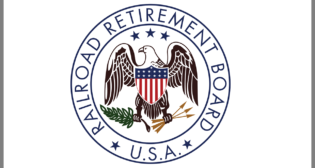
Is Your CRISI Application Under Way?
Written by Marybeth Luczak, Executive Editor
A $3.47 million CRISI grant made replacement of the William J. “Bill” Duggan bridge by the Iowa Interstate Railroad (IAIS) possible. The new bridge opened to freight rail traffic on June 30, 2020.
The countdown is on! The Federal Railroad Administration (FRA) is expected to release its CRISI (Consolidated Rail Infrastructure and Safety Improvements) notice of funding opportunity in March, with less than 90 days until the application due date, according to the American Short Line and Regional Railroad Association (ASLRRA). That’s why the association is urging its members to begin preparing applications now.
Among the projects eligible for funding are those that improve and expand freight and passenger rail infrastructure, as well as safety projects, such as grade crossing enhancements and rail line relocations and improvements; workforce development and training; regional rail and corridor planning; environmental analyses; research and deployment of railroad safety technology; and measures to prevent trespassing and to rehabilitate, remanufacture, procure, or overhaul locomotives for emissions reduction projects. The FRA last fall announced its most recent slate of CRISI grant award winners.
If your railroad is interested in an award, the ideal time to ask questions about the CRISI program and related projects and to resolve application issues is now. FRA representatives are available for consultation prior to the CRISI notice of funding opportunity release, according to ASLRRA. To receive a debrief on an unsuccessful fiscal year 2022 CRISI application, email [email protected].
ASLRRA is also referring its members to its own resources for further assistance:
- The Member Discount Program has a grant-writing Preferred Provider able to assist with various grant program applications.
- The CRISI Grant Application Information webpage provides more detailed guidance for short line railroads seeking a CRISI grant.
- The On-Demand Webinar library features grant-related recorded webinars.
- The ASLRRA Annual Conference and Exhibition will include multiple CRISI-focused education sessions, and representatives from the FRA will hold office hours to discuss the CRISI program with railroads.
Leading up to the CRISI notice of funding opportunity, ASLRRA is exploring different topics related to the grant program and the application process in its Views & News newsletter. In the Feb. 20 edition, the association focused on the benefit-cost analysis (BCA), an element that it said can be “quite challenging.” The U.S. Department of Transportation (USDOT) recently released an update to its BCA guidance. According to ASLRRA, this Department-wide policy document is the “key reference that all CRISI applicants should consult when preparing their BCAs.”
Among the major changes in this update are “lower rates to use for the required discounting of benefits and costs, new higher values for costs of air pollutants, and new standard values specific to the freight rail industry,” ASLRRA reported.
Also useful to applicants may be USDOT’s BCA spreadsheet template. “This is not an FRA- or rail-project-specific workbook,” according to ASLRRA. “It is a generic model that might be used for the BCAs required for different USDOT grant programs.”
Reviewing this spreadsheet template alongside the BCA guidance could be especially helpful for first-time BCA preparers, ASLRRA said, as they try to understand how the end product should look, what the key elements are, and how the elements are connected. The association pointed out that FRA’s webinar from 2022 discussing how to prepare a BCA remains a helpful resource. It walks applicants through key concepts and a few useful BCA calculations. Additionally, the FRA will offer a new round of informational webinars once the new CRISI notice of funding opportunity is ready for release, ASLRRA said.
Further Reading: “Short Lines Need CRISI to Avoid a Crisis”



